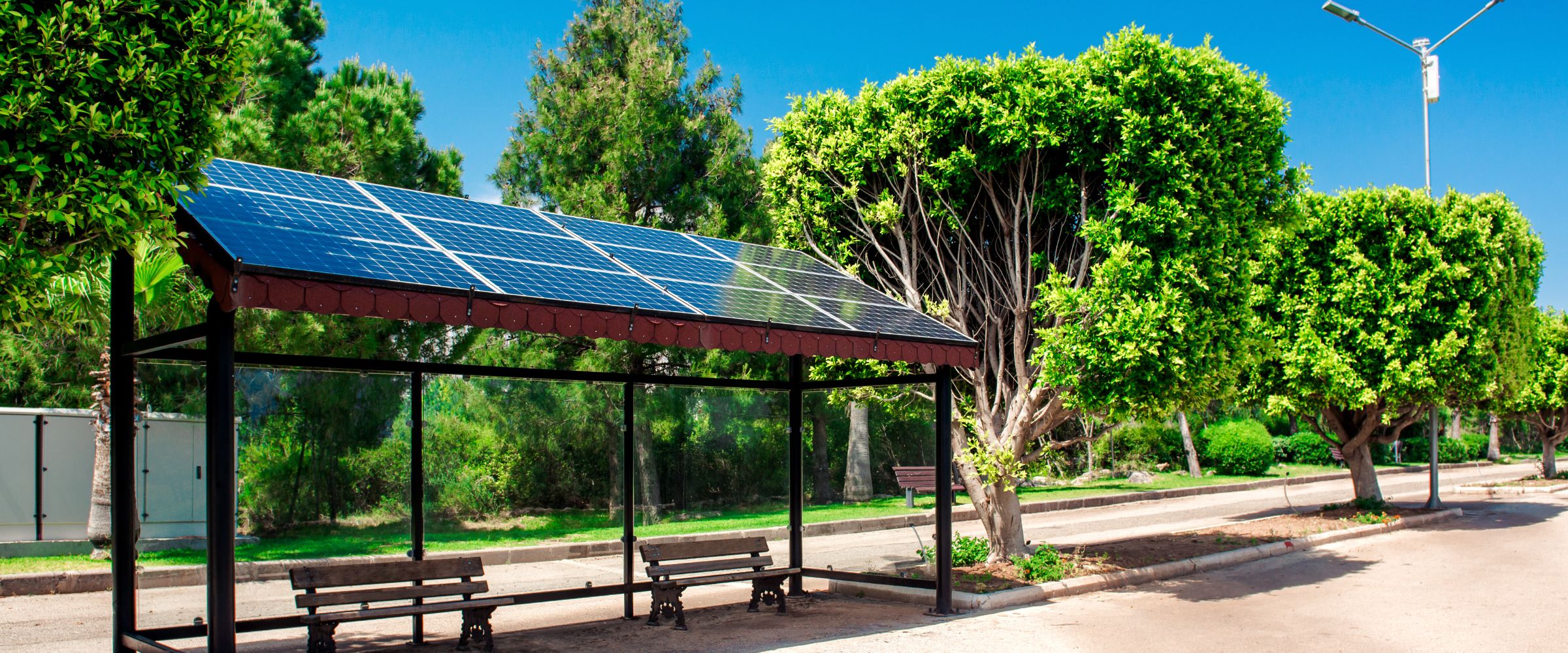Green stops for a better tomorrow
Exploring eco-friendly options for bus shelters.

January 31, 2025 in Frameworks
How can we make bus shelters more sustainable?
According to the most recent statistics from the Department for Transport, 69% of public transport journeys in Great Britain were made on local buses (2021)[1]. This shows that a significant portion of the British public depend on local buses for their journeys.
Therefore, we need a sufficient quantity of bus stops to facilitate the demand. However, it is important that we recognise their potential impact on the environment.
This is why our awarded suppliers offer different options for building and refurbishing bus shelters to that are more eco-friendly, the materials include:
- Bamboo – As bamboo grows it absorbs carbon from the atmosphere, and still does so when it has been used to build infrastructure. It is a durable material with high tensile strength which is also affordable[2].
- 100% recycled plastic – Reduces waste, conserves natural resources and eases the demand for manufacturing (decreasing greenhouse gas emissions)[3].
- Sustainable FSC timber[4] - The manufacturing and supply chain process meets the FSC standards, prioritising conservation values to preserve natural ecosystems.
- Hardwood (FSC® Forest Stewardship Council Certified) - Hardwood designed for infrastructure that also meets the FSC sustainability standards.
- Sedum roof – Sedum is ideal for creating a green roof because: it is suitable for the structure of a bus shelter roof due to its size and shallow roots, absorbs carbon dioxide at night which filters the pollutants in the atmosphere as well as requiring little maintenance. It is also lightweight, has insulating and energy-saving properties, resilient to pests and extreme weather, and can provide long-term protection for the roof[5].
- Solar panels – Utilising renewable solar energy to power the electrical instalments within the bus shelter infrastructure, such as the real time passenger information display screens.
Recent examples of eco-friendly bus stops:
Throughout the UK there has been many examples of instalments and plans for eco-friendly bus shelters, particularly “living roof” shelters and the emphasis on them being bee-friendly.
- As of May 2024, around 70 new “living roof” bus shelters have been installed in Devon, featuring 16 varieties of low-maintenance plants on their roofs[1].
- As of January 2024, around 45 “bee-friendly” bus stops are planned to be placed around Derby, to improve the environment in the city centre[2].
- As of March 2024, Tonbridge and Malling Borough Council announced their scheme to improve bus services, including installing “living roof” bus shelters[3].
- In March 2024, Portsmouth City Council have installed two new “living roof” bus shelters, and plan to install 13 more across the city[4].
- In March 2024, Chorley announced plans to install 5 “living roof” bus shelters across the city[5].
- In October 2023, Newcastle announced their first bee-friendly bus shelter which had a wildflower roof[6].
Are you looking to install eco-friendly bus stops?
Procurement Services can offer these eco-friendly options as part of our Bus Shelters, Real Time Passenger Information (RTPI) and Associated Services framework, visit our framework page for more information.
References:
[1] https://www.gov.uk/government/statistics/transport-statistics-great-britain-2021/transport-statistics-great-britain-2021
[3] https://www.climateofourfuture.org/the-importance-of-recycling-plastic-for-the-earth-a-comprehensive-guide/


